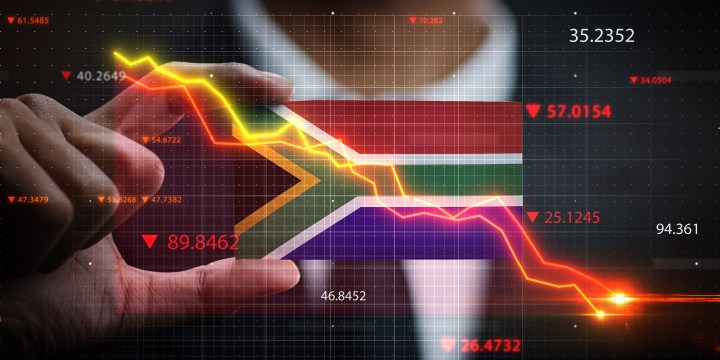GLOBAL ECONOMY ANALYSIS
Financial stresses spark warnings of the high costs of central bank rate hikes

Stark warnings from many sources are being voiced about the potential costs to the global economy of hawkish central bank actions. These are showing up in the evidence coming through that reveals worrying financial stresses. The fourth quarter is thus likely to herald ongoing, nail-biting volatility.
As we head into the final quarter of the year, warnings abound of the many tail risks — or potential black swans — that could further derail financial markets and impose lasting damage on the global economy.
The tail risks — the probability of events occurring that will result in significant losses, are the usual suspects: persistent inflation, pushing interest rates too high, the risk of recession and escalating geopolitical tensions. Any one of these could tip already stressed financial markets into the abyss.
In an indication of mounting concerns that the world could face a systemic market failure, several bodies have formally issued warnings or spoken out on the financial stresses and risks that could potentially derail markets. These include the European Systemic Risk Board (ESRB), the World Bank and the US Federal Reserve.
The ESRB issued an official general warning on the vulnerabilities in the European Union financial system in late September, saying that the probability of tail-risk scenarios materialising had increased since the beginning of 2022 — but had been exacerbated by recent political developments.
It said: “Rising geopolitical tensions have led to an increase in energy prices, causing financial distress to businesses and households that are still recovering from the adverse economic consequences of the pandemic. In addition, higher-than-expected inflation is tightening financial conditions.”
Against this backdrop, the board identifies three “severe systemic risks to financial stability”. These are:
- Balance sheet stress for non-financial corporations and households, brought on by the deterioration in the macroeconomic outlook combined with the tightening of financing conditions.
- A sharp fall in asset prices that would “trigger large mark-to-market losses, amplify market volatility and cause liquidity strains”.
- A possible increase in credit risk because of a “pronounced deterioration” in the macroeconomic outlook “at a time when some credit institutions are still in the process of working out pandemic-related asset quality problems”.
The board says these tail-risk scenarios could play out if there is a further escalation in geopolitical tensions and would depend on the extent and duration of the economic downturn and the persistence of high inflation. They could also materialise simultaneously, “thereby interacting with each other and mutually amplifying their impact”.
US Federal Reserve vice chair Lael Brainard also weighed in on global financial stability considerations at a Fed-organised research conference in Stanford at the end of September, highlighting the importance of considering how tighter monetary policy could have cross-border spillovers and spillbacks that “might interact with financial vulnerabilities”.
Potential vulnerabilities
Brainard pinpointed potential vulnerabilities as countries with high government or corporate debt levels, where higher interest rates and currency depreciation could put debt sustainability at risk. Also, increasing risk premiums “could kick off deleveraging dynamics as financial intermediaries de-risk” and “shallow liquidity in some markets could become an amplification channel in the event of further adverse shocks”.
Brainard noted that supportive monetary and fiscal policies were always expected to reverse course in the wake of the pandemic. But the war in Ukraine, which has significantly affected real incomes in some of the most severely affected economies because of the energy and commodity price increases, Covid lockdowns and weather disruptions have complicated matters.
As the supply of commodities, labour and key intermediate inputs improves, which is generally expected, Brainard says it will become easier to resolve the imbalances.
It’s difficult to predict how long this will take, though. Says Brainard: “While the effect on financial conditions tends to be immediate or even anticipatory, the effects on activity and price setting in different sectors may occur with a lag, with highly interest-sensitive sectors such as housing adjusting quickly, and less rate-sensitive sectors such as consumer spending on services adjusting more slowly. In addition to the domestic effects from domestic tightening, there are cross-border effects of tightening through both trade and financial channels.”
High stakes
There’s no getting away from the fact that the stakes are high and that the cost of central banks’ efforts to rein in inflation could prove more punitive than high inflation would have been on the world economy.
UNCTAD certainly believes that to be the case, breaking away from the global narrative that has dominated this year, namely that hawkish monetary policy needs to be pursued at all costs if there’s any hope of averting entrenched double-digit inflation. Instead, this week it came out with a rallying cry to “quickly change the current policy course” to avoid the devastating impact it is having on the most vulnerable.
Releasing its 2022 Trade and Development Report, UNCTAD Secretary-General Rebeca Grynspan stressed that there is still time to step back from the edge of recession and urged governments and policymakers in developed economies to:
- Reverse course and avoid the temptation to try to bring down prices by relying on ever higher interest rates.
- Avoid austerity measures.
- Reform the multilateral architecture to give developing countries greater fiscal space and a fairer say in decision-making processes.
As well-intended as the UN Conference on Trade and Development may be, the likelihood of developed world central banks, particularly the US Fed, backing down now is extremely low, unless, as we saw after the global financial crisis, the financial system goes into a complete meltdown and forces its hand.
Events in the UK gave us a sneak peek of what that could look like today, with Prime Minister Liz Truss having to embarrassingly reverse her decision to remove the upper tax limit for wealthy individuals. BM/DM




















 Become an Insider
Become an Insider
Comments - Please login in order to comment.